The Corne¬ Daily Sun
Sun Women's History


Sports
Cartoon Weather Denver





Multiple Green Dragon employees said that the student-run cafe is set to close beginning in Fall 2024 due to renovations to Sibley Dome, the uppermost structure of Sibley Hall.
Disappointed by the potential loss of the iconic hub for students in the College of Architecture, Art and Planning and other creative communities, employees are fighting to preserve the space or relocate the cafe during renovations.
Upon hearing of the cafe’s potential closure, Green Dragon employee Kenneth Gonzalez ’24 created a petition to advocate for the cafe to stay open or be relocated throughout the 2024-2025 academic year. On the first day Gonzalez shared the petition, he said it already received “five pages worth of signatures.”
“As a cherished part of our community, the Green Dragon cafe has fostered a welcoming environment for artists, queer people, fashion statements and chai lovers alike,” the petition states. “We cannot let this cultural hub disappear without a fight.”
Despite graduating this semester, Gonzalez emphasized the significance of safeguarding a fundamental aspect of student life.
“[Green Dragon is] the one place I go to almost every day. I think the vibe here is very different from other places on campus,” Gonzalez said.
To continue reading this article, please visit www.cornellsun.com.

On March 8, Justin Gaffney Samuels ’10 filed a lawsuit against Cornell Tech and the City University of New York over alleged illegal discrimination in the admissions policy of Break Through Tech.
The program, a national initiative launched in collaboration with Cornell Tech and CUNY, offers computing and artificial intelligence training as a pathway to careers in technology for women and non-binary undergraduate students from diverse backgrounds.
"As a Black man with a deep interest in technology, I was particularly interested in the opportunities offered by the Break Through Tech programs,” Samuels wrote
in the official complaint. “However, upon reviewing the program's website, I was dismayed to discover that I am precluded from applying due to its discriminatory policies.”
Break Through Tech’s mission statement says that the program “operates at the intersection of academia and industry to create new pathways into tech degrees and careers for women and non-binary undergraduates from diverse backgrounds.”
Samuels claimed that Break Through Tech’s admission policy violates Title IX of the Civil Rights Act of 1866, prohibiting sex discrimination in federally funded institutions.

As the ground begins to thaw and students on campus grow excited by a taste of spring, newly accepted students celebrate their soon-to-be migration to Ithaca. At 7 p.m. on Thursday, March 28, regular decision applicants anxiously rushed to open the decisions from Cornell, joining accepted students from the early decision round. The highly-anticipated final Thursday of March is dubbed Ivy Day, referring to the release of regular decision results from all Ivy League colleges.
Cornell cumulatively offered admission to 5,139 students to the Class of 2028, a four percent increase to last year’s 4,994 acceptances. Students hail from all 50 states and all corners of the globe, and 16.5 percent of this year’s admits are first-generation students.
Accepted students described emotional reactions to seeing they would spend their next few years on the Hill.
“When I opened the letter, it took me about 30 seconds of just staring at my phone screen, and I didn’t even realize that confetti went off,” said Johanna Troelstra, an accepted student to
the College of Agriculture and Life Sciences from Queensbury, New York. “I ran back into the school and told all my friends because I was so excited.”
Troelstra was not alone in sharing her excitement. Hannah Elfenbein, an accepted student to the Nolan School of Hospitality from Crested Butte, Colorado, recalled how, when opening her decision, she and her family showed their Cornell pride with their choice of clothing.
“I had made all my parents wear red and we FaceTimed my sister.” Elfenbein shared. “After opening the letter and hearing the song play, all four of us
cried.”
Many students said their acceptance manifested from years of dedication to academic and extracurricular pursuits and represents the realization of a lifelong dream.
“Cornell was my dream school since I was a kid,” said Audriana Varner, an accepted student to the College of Engineering from Indiana. “I always kept Cornell in the back of my mind as my ultimate goal. It was very shocking to have finally reached that moment.”
The only thing that new admits appear to be more excited about than getting accepted is
their upcoming four years.
“What initially drew me to Cornell was mainly the campus,” Varner said. “I really wanted to consider the environment I would be living in because that can have a large impact on my health.”
In addition to the infamous gorges the campus offers, the school boasts its ranking as the 12th-best university nationally.
To continue reading this article, please visit www.cornellsun.com.
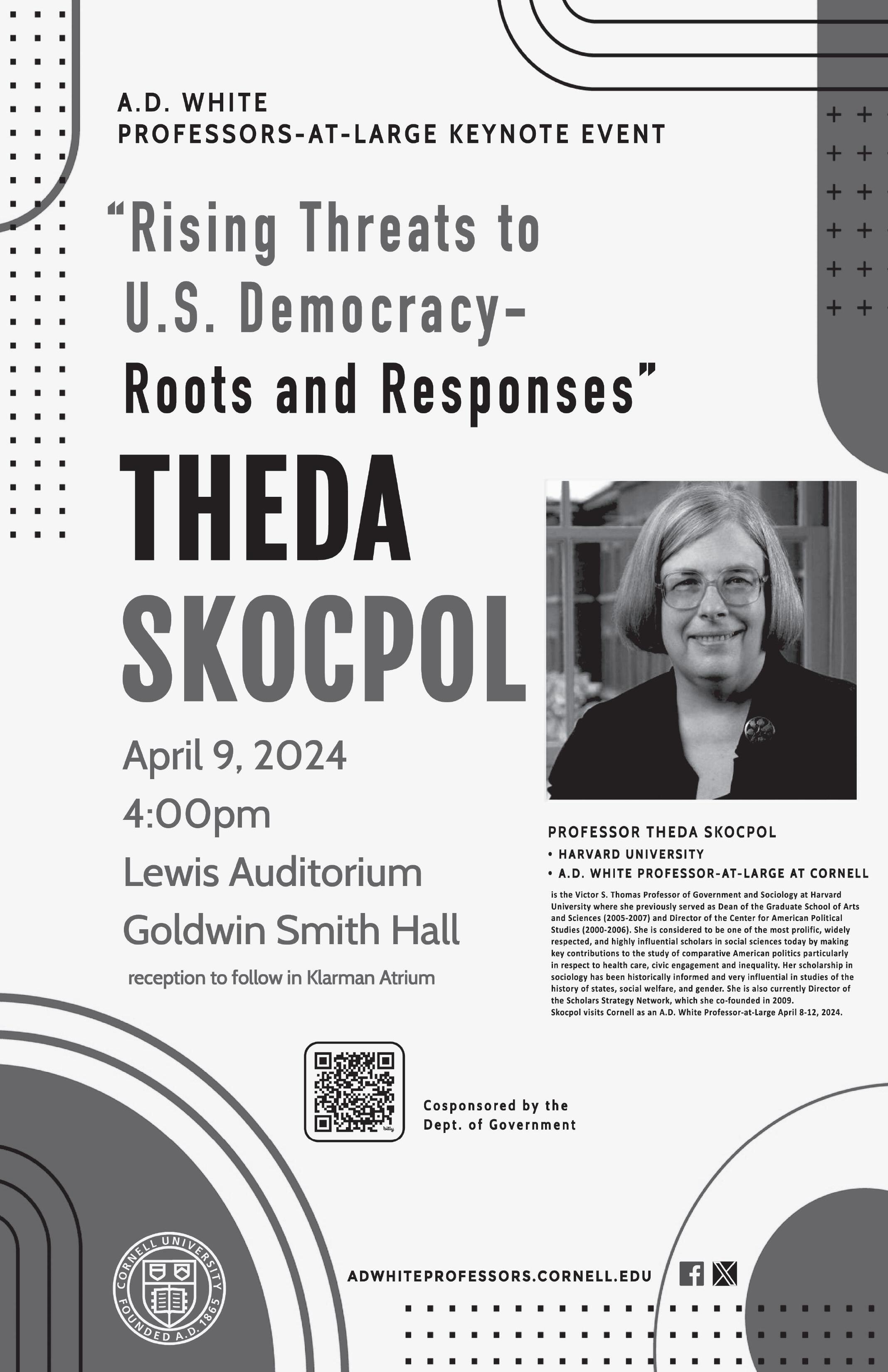
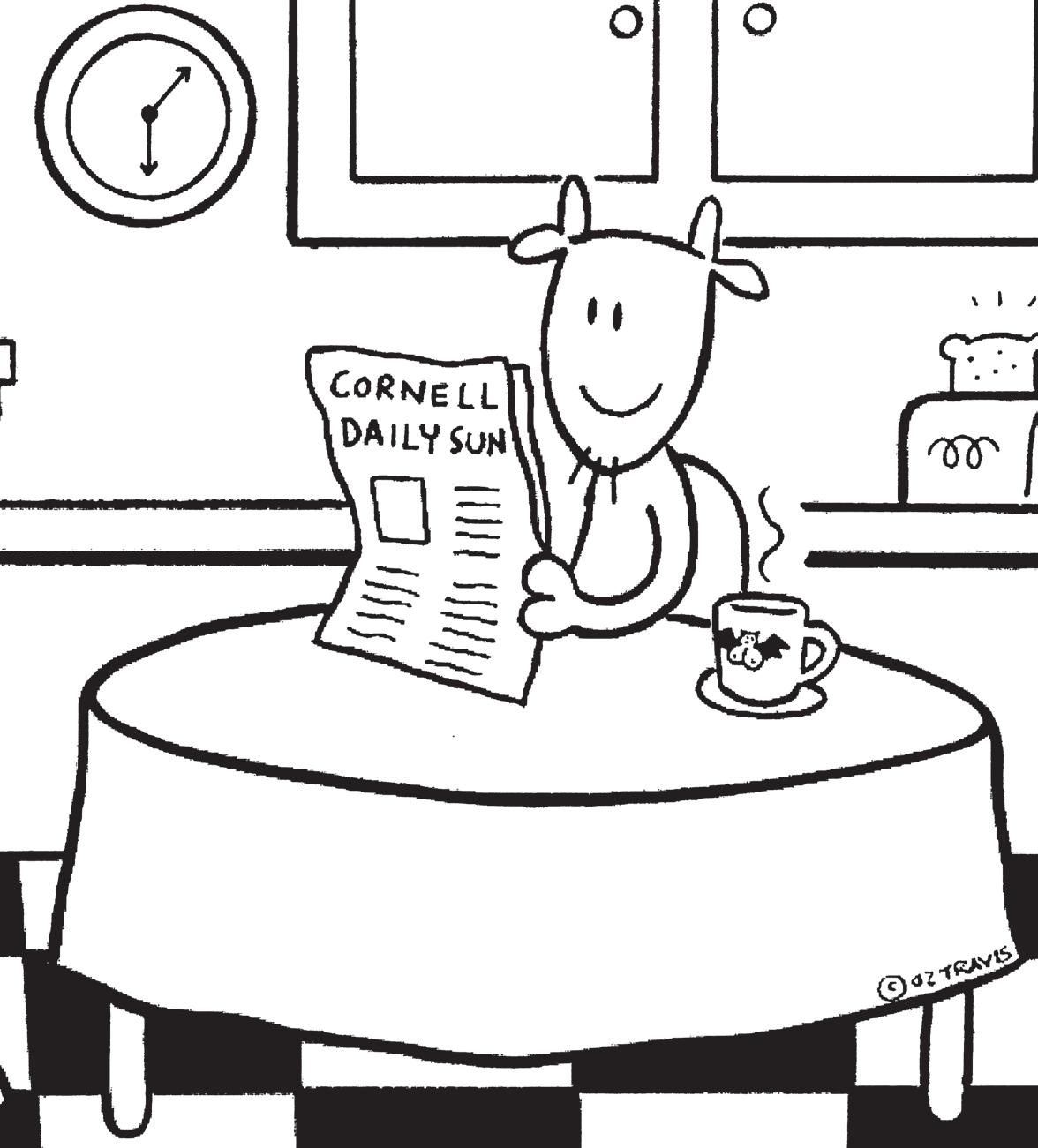

Continued from page 1
“The stated mission [of Break Through Tech] is contrary to what is in the law. They are creating new categories of discrimination against men,” Samuels said in an interview with The Sun. “Cornell gets federal funding. They cannot give one group preference over another.”
He also said that the policy violates Title VII of the Civil Rights Act of 1964, the New York State Human Rights Law and the Civil Rights Act of 1866.
Section 1981 of The Civil Rights Act of 1866, which prohibits discrimination based on race, skin color or ethnicity when creating and enforcing contracts, was cited by conservative litigant Edward Blum in the landmark United States Supreme Court case Students for Fair Admissions v. Harvard, ruled in June 2023. The decision struck down racebased affirmative action policies in college admissions.
Samuels criticized sex and race-based affirmative action programs, saying they award aid based on “identity politics” rather than merit.
He also claimed Break Through Tech’s admission preference for women and non-binary applicants is illegal under the Supreme Court’s decision.
Prof. Sheri Lynn Johnson, law, who teaches courses in constitutional and criminal law, told The Sun she disagreed with Samuels. Johnson said that racial generalizations are subject to strict scrutiny, the highest standard of review that a

court will use to decide if discrimination is constitutional.
However, Johnson said that gender-related admissions preferences like that of Break Through Tech are judged under intermediate scrutiny, which is a less rigorous standard than strict scrutiny.
“The Supreme Court decided that diversity generally … may well be an important governmental interest,” Johnson said. “The standard for gender classification is more lenient than the one for race classification.”
Johnson also said that Break Through Tech may use its admissions policy to address past societal discrimination against women and non-binary individuals in technology. She said the Supreme Court has previously held that addressing historical discrimination passes intermediate scrutiny.
“Students for Fair Admissions doesn’t change anything with respect to gender classifications,” Johnson said. “I don’t see that therefore, Students for Fair Admissions speaks to [Break Through Tech] at all.”
Multiple representatives from Break Through Tech and Lindsey Knewstub, a representative of Cornell Media Relations, declined to comment on the legality and merits of diversity initiatives in technology and artificial intelligence education.
Samuels noted that he filed a separate retaliation lawsuit against Barnard College in July 2023. He alleged that he was denied admission to a screenwriting workshop at a
film festival run by Barnard in retaliation for a complaint he filed against the college’s admissions policy, which is exclusive to women.
Samuels said that economist Mark Perry motivated him to begin filing discrimination lawsuits against exclusive admissions policies at higher education institutions. Perry has filed hundreds of federal complaints against academic programming and scholarships restricted to applicants from a specific sex or racial background.
“Students for Fair Admissions doesn’t change anything with respect to gender classifications.”
Prof. Sheri Lynn Johnson
Though it may take a year or more for the courts to determine the outcome of the Cornell Tech case, Samuels anticipates that they will likely rule in his favor, finding illegal sex discrimination within the Break Through Tech admissions process.
Johnson said that Samuels may have standing in seeking personal damages. However, she said that it would be unlikely for the court to rule to alter Break Through Tech’s gender-related admission policy, particularly if the gender classification in the program’s policy serves to compensate for past discrimination.
“The Supreme Court has said that correcting for past societal discrimination is an important governmental
interest, which is enough to satisfy the intermediate scrutiny standard that applies to gender,” Johnson said.
Eric Lechpammer can be reached at elechpammer@cornellsun.com.
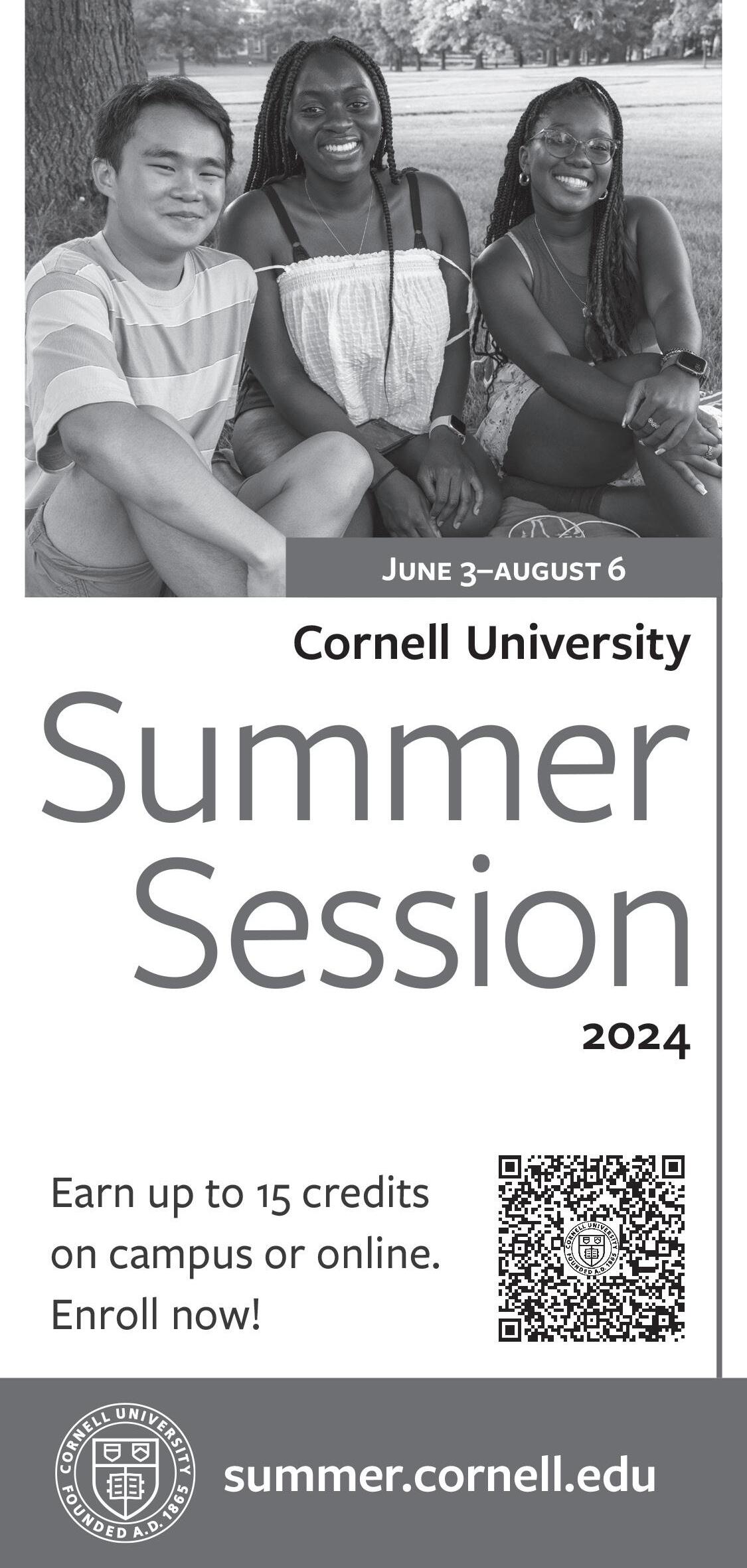
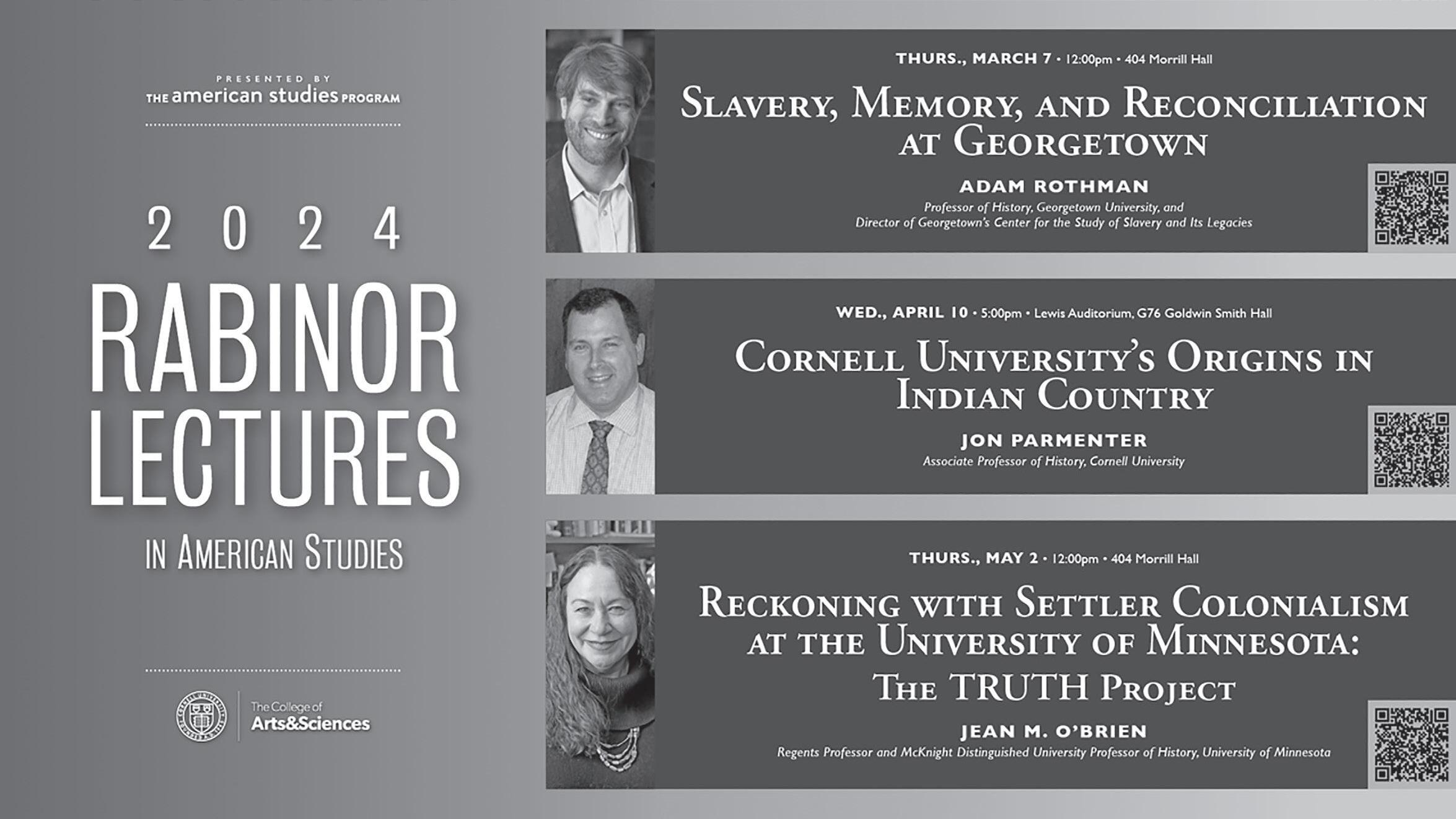
Since 1870, women have accessed academic opportunities at Cornell — the first Ivy League institution to admit female undergraduates. Yet many organizations limited women’s participation in activities, including at The Sun.
The Sun took a look into its complex history of women’s roles on the paper, speaking to a former Sun women’s editor and
former Sun women’s advertising managers about their experiences in these now-defunct positions.
Until World War I — when institutions nationwide began embracing women’s contributions while men served in the military — The Sun did not include any women on its editorial board.
Female students were then permitted to join The Sun’s editorial board as “women’s editors.”
Harriet Parsons 1919 and Alice Street 1919 took on the roles of women’s business manager and women’s editor, respectively. The
women’s business manager oversaw advertising that appealed to women, while women’s editors’ stories would often be featured under a dedicated “Women’s Page” or “Women’s Note” section.
The Sun examined previous issues of the newspaper housed at The Sun’s office in Ithaca Commons and the Keith R. Johnson ‘56 digital archive.
By the 1964-1965 editorial board, there was no women’s editor on the masthead, with Elizabeth Gordon ’65 serving
as the last ever women’s editor at The Sun. By March of that year, only women’s advertising manager Penny Skitol ’65 was listed, and by the fall, The Sun no longer had women’s roles featured on the masthead.
There was no written announcement of this decision.
Despite numerous women assuming the role of women’s editor, it is noteworthy that, while rare, some women held non-gendered positions throughout the same period. The Sun broke a 63-year streak of male editors in chief with the

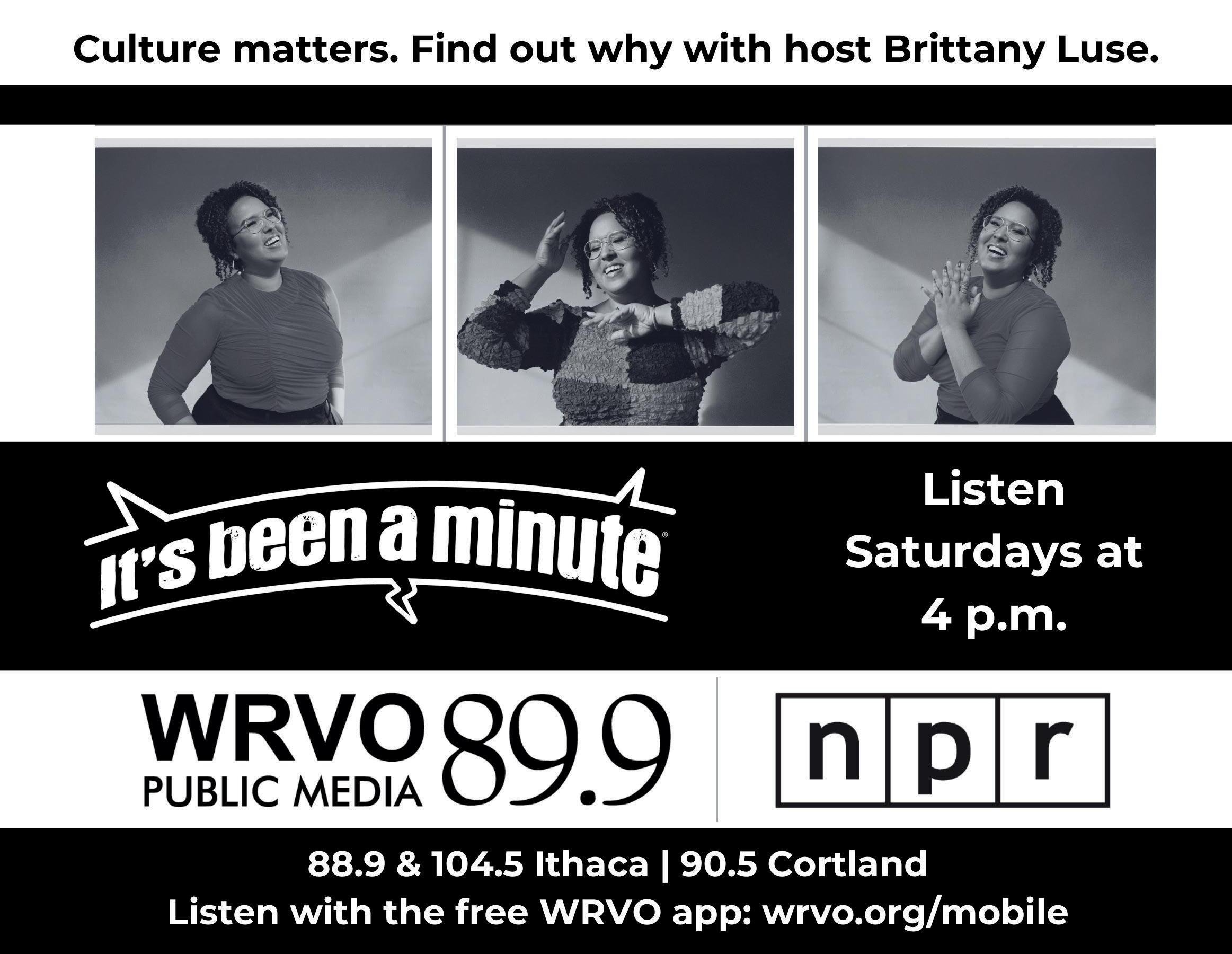
promotion of Guinevere Griest ’44, who briefly served in this role during World War II.
Anne Morrissy Merick ’55, scorned during her term as a “lady sports editress” and a “sportswriting doll,” captured national media attention by triumphing over three male students to become The Sun’s first female sports editor in 1954.
A little less than a decade later, Elizabeth Bass ’72 was elected as editor in chief in 1971 and was deemed the “first female editor in chief” in the newspaper’s history.
The Sun spoke to former students at Cornell who took on various roles within the women’s sections on The Sun as they reflected on their time as Sun employees and Cornell undergraduates.
Elizabeth Gordon ’65: The Last Women’s Editor
For Elizabeth Gordon ‘65, the last women’s editor at The Sun, serving on the editorial board was an “inevitable” decision due to her experience as an editor for both her elementary and high school papers.
“Even with the restrictions on my participation [at The Sun], I loved it,” Gordon wrote in an email to The Sun.
During her time at the helm, Gordon, who also served as president of the Panhellenic Council, covered a variety of stories about women on campus while honing her journalistic expertise.
“The most memorable article for me was the opening of Helen Newman Hall — finally a women’s athletic facility close to the girls’ dorms,” Gordon said. “As someone who had to trek all the way from Teagle to Donlon my freshman year when I took [a course in] advanced life-saving, this was nothing short of life-changing.”
Gordon said the restrictions for women on campus made it so that she had no choice but to take on the women’s editor role.
“Women had a curfew, and, therefore, could not be relied upon to cover certain stories and, most importantly, could not put the paper to bed,” Gordon wrote.
Gordon recalled that during her freshman year, women were subject to a curfew of 9:30 p.m. on weeknights until Thanksgiving, after which it extended to 11 p.m. on weeknights and midnight on Friday and Saturday nights.
“Being a woman on campus was, in retrospect, difficult, though at the time I didn’t think so,” Gordon told The Sun. “There were curfews, and, until my senior year, we had to live in the dorms or sorority houses.”
To continue reading this article, please visit www.cornellsun. com.





There has arguably never been a more captivating character than the wild ’70s female rock star, or rock groupie, and they have arguably never been better presented than in the movie Almost Famous and the TV show Daisy Jones and the Six. Today we will discuss these projects’ iconic stars: Kate Hudson’s Penny Lane and Riley Keough’s Daisy Jones.
Though both of these stories have male leads, the men simply pale in comparison to their female counterparts. It does not matter how handsome or talented Sam Claflin’s Billy Dunne or Billy Crudup’s Russell Hammond are — their spotlights are stolen because the women dancing across our screen with their bellbottoms and wild hair are ethereal, completely captivating. Despite being ’70s characters — Almost Famous is set in 1973 and Daisy Jones in 1977 — there is something timeless about them, something which connects deeply with female viewers. They are like older sisters, completely terrible influences, but important role models nevertheless, who inspire young girls to become the people they want to be.
Their stories and choices are not perfect: Both girls nearly die in the glamorized whirlwind of ’70s drug culture. However, there is something about this too which is enthralling — the complete freedom and carelessness of these characters as they navigate the dangers of the world — taking free spirit to a completely new level and creating figures entirely unlike anyone else. Though there are endless amounts to analyze, we will focus on three key aspects of these iconic characters: the facades, backgrounds and downfalls, and power and the muse.
The Facades
A facade is a superficial appearance that people hide behind. In the cases of Penny Lane and Daisy Jones, this includes their styles, monikers and demeanors. In truth it may be these fake personas that we find so captivating. Every person has their weaknesses, their struggles and doubts; however Penny and Daisy hide these away behind completely confident shields. The more we see of these characters, the more we want to know what is behind that armor. It is precisely their attempts to make themselves uncomplicated that makes them all the more complex.
Penny Lane is a character of contradictions. She insists throughout Almost Famous that she is there for the music and not the men, despite spending the entire movie sleeping with and pining over Russell. She is a leader, the clear head of the Band Aids; however, she dutifully follows the band wherever they go. There is also much about Penny that is ambiguous — we are not sure how old she is or how long she has been in the world of rock-and-roll. She has so many different sides and personas that should come together to create a muddled character, but instead shape into a incredibly well-developed figure because of Hudson’s masterful acting.
And indeed, as Hudson dances through the story in her trademark furlined coat, you cannot help but focus on her, cannot help but feel that you know
her. She is the inner child in all of us — desperate only to have fun and live life to its fullest. Hudson believes this is why the movie was so popular, because these young characters, “allowed the love of music and this time, that innocence… I think it brings people hope… when they see it, they’re hopeful for life.” Except of course, Penny’s life is fake. When her friends are gone and her rock-and-roll journey ends there is nothing left. Like a child thrust out into the world without the guidance of elders, she is unsure how to function independently. Protagonist William tells her she needs to realize none of it is real, ending with a simple but critical line: “There’s not even a Penny Lane.”
Deep down, Daisy Jones is also a child hiding under the guise of an adult. “I didn’t like myself very much when I was little,” Daisy says in the show. “So, I became somebody else.” But despite becoming someone new, Daisy never truly became an adult. When Billy yells at her, “When are you gonna grow… up?”
Daisy replies, “Hopefully never.” And she doesn’t; she makes terrible, spontaneous choices, acts immaturely with serious topics such as Billy’s desire to hide his past from the media, and dances through life like nothing can go wrong. Her world is one of escapism — running away from real emotions, consequences and anything difficult.
Daisy’s carefree personality takes physical form in her style. Her Bohemian outfits are characterized by flowing sleeves and a lack of bras; she often wears a Kimono or tunic-style Greek dress, sometimes simply a long button down shirt. But the most necessary piece of Daisy’s style is her hair. Unlike Penny who acts calmly, Daisy is like an explosive, always ready to go off. As a fiery ginger myself, I support the stereotype that every redhead has the personality to match. Daisy’s red hair is a key component of her character, a physical representation of her spunk.
However, this all falls away with music. When Penny listens to the bands, we most clearly see her true, wild self. When Daisy sings, Keough fills her voice with all of the emotions and suffering that Daisy hides away, and her songs reveal everything she is feeling. Viewers understand these weaknesses: Daisy wants to be taken seriously, to have a family like The Six, and to prove she is not nothing like everyone in her life always told her she was. But Daisy doesn’t know how to deal with these feelings. She discusses this when song-writing with Billy, saying that when she’s sad she takes a pill, to which Billy replies that when he is sad he feels it. This is something Daisy cannot comprehend; a foreshadowing of the danger to come.
Daisy’s background is prominently featured in her story, as the show includes flashback scenes to her childhood. When she sings as a little girl, Daisy’s mother says to her, “No one wants to hear your voice.” Later, Daisy asks if she has any talent as a writer, to which her mother replies, “You’re a pretty girl.” The underlying messages of this line are incredibly harmful, implying that all that matters for a young woman is what she looks like, not what she dreams of or creates. Though this aspect is not as fleshed out
in Almost Famous, Penny seems to have a similarly disaffected mother. Her mother’s advice was to, “‘Marry up. Marry someone grand.’” This line is also demeaning, teaching Penny that she needs a man to help her succeed in the world.
These messages, no matter how off-handed or commonplace, will stick with a person. As Daisy says in the beginning, “No matter how confident you pretend to be… if enough people tell you you’re sh*t, you believe ‘em.” These moments with their mothers are what sparked the deaths of their real selves and the births of Daisy Jones and Penny Lane.
Despite their good intentions — goals of becoming people more worthy of pride — a life built on rebellion is bound to spiral out of control. For Penny and Daisy it began with fake names, and moved on to drinking and drugs, with both characters ultimately overdosing and coming close to death. The psychology of this chain of events goes beyond ’70s drug culture, and can be explained with one key reason: In a world where so much is fake, nothing seems real. Consequences and danger do not exist when nothing is taken seriously. This is true even for viewers, who struggle to remember that these stories are based on real peoples’ lives.
Penny Lane was inspired by three women: Bebe Buell, a model who was notorious for dating rock stars; Pamela de Barres, a rock-and-roll groupie; and Pennie Lane Trumbull, who in the ’70s formed The Flying Garter Girls, a group that traveled with rock bands. Daisy Jones was also inspired by a real person, Stevie Nicks, who together with Fleetwood Mac were the real band that inspired the novel: mostly from their cocaine use and dramatic interpersonal relationships.
Drama between men and women is seen in the film versions of these stories as well: one of Daisy’s boyfriends steals her song, her best friend Simone is forced to sit on a producer’s lap and Penny is sold by the band for 50 dollars and a case of beer. Being timid was not an option for these women — not if they wanted to make their own way, or hold some power of their own.
Power and the Muse
The ’70s was the era of the women’s rights movement, which focused on rights in politics, workplaces and families, including the passage of Title IX of the Higher Education Act in 1972, prohibiting discrimination based on sex in schools, and the decision of Roe v. Wade in 1973, which gave women rights over their own bodies. However, even in the ’70s, and even in the avant garde world of rock-and-roll, women were far from respected.
Daisy is constantly fighting misogynistic ideals in Daisy Jones and The Six She is only asked about her clothes in an interview, to which she responds, “Why are you asking me about my clothes, man? I mean, why don’t you ask Billy about that dumb looking shirt he has on?” Even the boys in the band originally sensualize her, until Daisy snaps, “You know it’s not my job not to turn you on, right?” And Daisy is not the only woman fighting these narratives. Karen, the pia-
nist, talks about this when explaining why she does not want to go public about her relationship with Graham. “The moment they know we’re together, everything changes…” She says. “‘She was sleeping with the guitarist, so they let her in the band.’ I mean that’s what people will think… I’ve just, worked too … hard and I’m too …. good to be forever known as ‘The Girlfriend’ in The Six.” And when Karen finds out she is pregnant, she refuses to drop out of the band to raise a baby, choosing instead to follow her dreams (thanks Roe v. Wade!)
Because of these complicated relationships, the idea of the muse becomes contentious. In Almost Famous, Penny tells William, “We are not groupies. Groupies sleep with rockstars ‘cause they wanna be near someone famous…We don’t have intercourse with these guys. We inspire the music. We’re here because of the music.” Daisy feels strongly the other way, saying, “I had absolutely no interest in being somebody else’s muse. I am not a muse. I am the somebody.” And Daisy most certainly is; no matter how many times men try to put her down, she continues fighting back. There’s a great scene where she gets revenge by pushing her ex-boyfriend who stole her song into a pool at a party. And when Daisy is first approached by a record company, she declines, saying, “I don’t think I want to be shaped.” Daisy refuses to conform, always remaining undeniably herself, which is what makes her so inspiring. Many times throughout the show, we see the younger generation looking up to Daisy. When Daisy meets a fan who tells her, “My daughter wants to be you when she grows up,” she crouches down to her level and says, “Dream bigger, little bird. You can be anything you want to be.”
The characters of Daisy and Penny are incredibly important. Their stories encourage women to follow their dreams, to not be defined by the box that people put them in and to become whoever they want to be. While the idea of becoming someone new can be a toxic mentality, sometimes it is a necessary step. Perhaps we are all stopped from being the people we want to be simply because we do not have the confidence to try; perhaps we are frightened away from our dreams by those around us or the sexist ideals that remain in our society. This may be why we are drawn to Daisy and Penny, women who simultaneously teach us what not to do, and also show us that we can become whoever and whatever we want. It is this timeless message that makes Almost Famous, despite celebrating its 20 year anniversary in 2020, still relevant today, and Daisy Jones and the Six feel like it could be set today instead of the ’70s. With such continued infatuation with the idea of women in the world of ’70s rock-and-roll, it is easy to imagine that more projects will follow suit. In the years to come, I am curious to see if any new characters can come close to the iconic stature of Penny Lane and Daisy Jones.
To the Editor:
When I was first sworn in as the new Director of Elections for the Student Assembly, I inherited a roughly 15 percent voter turnout rate and a campus which was — nearly entirely — politically disengaged with Cornell student government. I know this because I was one of these students.
I did not vote in the fall Student Assembly elections, and at the time, I felt entirely bored and occasionally annoyed with the process which included being bombarded with emails and posters across campus. My thought process was simple: The Student Assembly, in my view, was an institution with no real power. I saw it as a playground for students who wanted to pad their resume and play mock government. Why would I engage in such a system? Why should I even care about it?
As my first semester at Cornell came to a close, I came to the same realization that many others across campus felt — that my original perception was the furthest thing from the truth. The Student Assembly holds real political power at the University level, and as someone who has a passion for shared governance and student empowerment, I felt that I had to get involved to make a change to this inaccurate and harmful assumption.
The truth is this: The Student Assembly wields tangible authority — the power to appropriate hundreds upon thousands of dollars in funding — and it has the potential to be your vessel in expressing your opinions on campus, but until we get most students to vote, the Assembly will not be representative of the student body. The Assembly most certainly will not work in the way it was intended with current turnout rates, and it can not be your voice if you don’t speak up.
As I previously stated, roughly 85 percent of students at Cornell last semester — myself included — did not vote. If we want to build an Assembly that is representative of the student body, we have to step up and cast our ballots. We have to pay attention throughout the process. We have to start to care again. If we don’t, the Assembly will be just as disengaged as we are.
The voting period will begin on April 15. You can vote by finding the email in your inbox from Opavote, scrolling to the bottom, and clicking the button to fill out your ballot. I encourage each of you to do your research and fill out the form for the candidates who you feel best represent your views.
— Luke Thomas '27, director of elections for the Student Assembly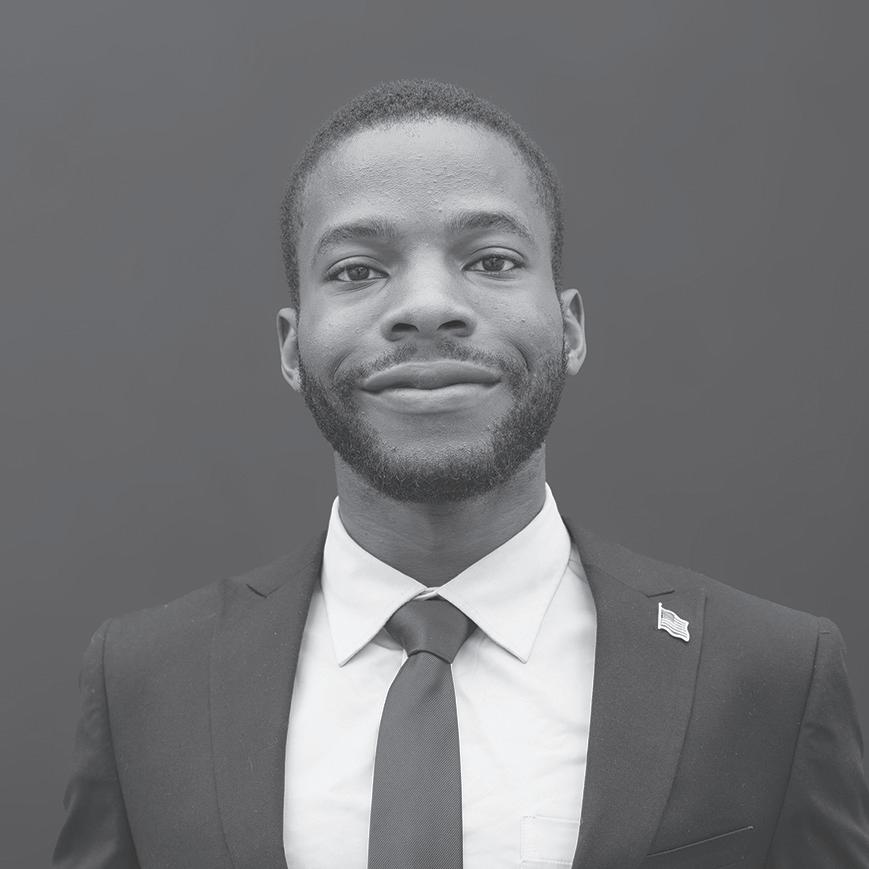
Daniel Obaseki is a fourth year student in the College of Arts and Sciences and the President of the Cornell Political Union. His fornightly column Beyond Discourse focuses on politics, culture and student life at Cornell. He can be reached at dobaseki@cornellsun.com.
The political world can be too all-encompassing. Of course, those who believe that everything is political will take issue with that statement, but it is not unreasonable to propose that one’s personal life ought to be divided from a life rife with division and inevitable conflict. I won’t litigate whether all things are political here (though they aren’t), but I will criticize the nature of our political environment today. Too often people worry about what is beyond their control, dwell on inconsequential things, and wallow in the negative emotions that stem from those anxieties. It has gotten to the point where 65% of Americans associate politics with a feeling of exhaustion, yet political engagement is at a record high. At Cornell, we cannot go a day without a politically-divisive event or decision, and the coverage thereof. This is not to say that political engagement is unhealthy. We simply have to be more mindful about our manner of engagement, lest we lead a life without peace of mind.
It is well-documented that anxiety tends to stem from a lack of control over one’s environment. Be it a worry of how our professors will grade our work, or on which blue moon the next TCAT bus will arrive, we often find ourselves in distress because of our inability to have the world as we want it to be. The same applies to anger, because the frustrations of our day-today worries mixed with our inability to correct the wrongs of the world, tend to build up to a point of baseline aggravation. Yet, we constantly focus on political events and circumstances well beyond our control. That is not to say do nothing, or do not worry about them. There is always something to do. But it can be good toafford ourselves a certain level of serenity in how much of our time and emotional strength we commit to these things. Unhealthy engagement can become damaging to the cause, or to our commitment to it.
Americans are addicted to information. We constantly want to know what is going on in the lives of others, be it political, pop culture or otherwise. Thus, we constantly find
ourselves dwelling on information or situations that are relatively insignificant in how they benefit or harm our lives. Especially in the college context, we cannot help but worry about that one particular drama in another club or another one of the SA’s debacles. I believe this largely comes from the totalizing nature of college life. We are stuck in this environment for eight months out of the year, where most of our relationships are centered around the University, and our future careers often depend on our on-campus engagement. As such, we are often too engrossed in college-level conflicts, not just political ones, often failing to consider the purpose of our time in college and the life beyond it. I’ve made this mistake plenty of times in my time at Cornell: it is inevitable. But we should all be mindful to recognize that the vast majority of the conflicts, drama, and anxieties we have now will not matter a year after graduation. Your life begins after that. For now, focus on your education.
One interesting thing I have learned at Cornell — which I am constantly reminded of in my engagement with politics — is that people cannot help but grasp more reasons to maintain what they believe to be righteous indignation. This is a natural extension of our tendency for confirmation bias. A classic example of this is bringing up a long-past character flaw to justify our disdain for an ex (despite being okay with it for the longest time), but this phenomenon can happen to all kinds of relationships. People also constantly believe themselves as the victim and underdog, giving them more reason to “fight” and “win.” This is all to say that righteous indignation is pleasurable, but easily misguided. Seeing yourself in this light can become an unhealthy obsession, constantly vigilant and distrustful of your environment and peers. It is because of painful lifestyles like these that polarization is at its highest today. While this kind of anger can be useful for political campaigns, it is ultimately corrosive, politically, emotionally and spiritually.
To continue reading, visit www. cornellsun.com

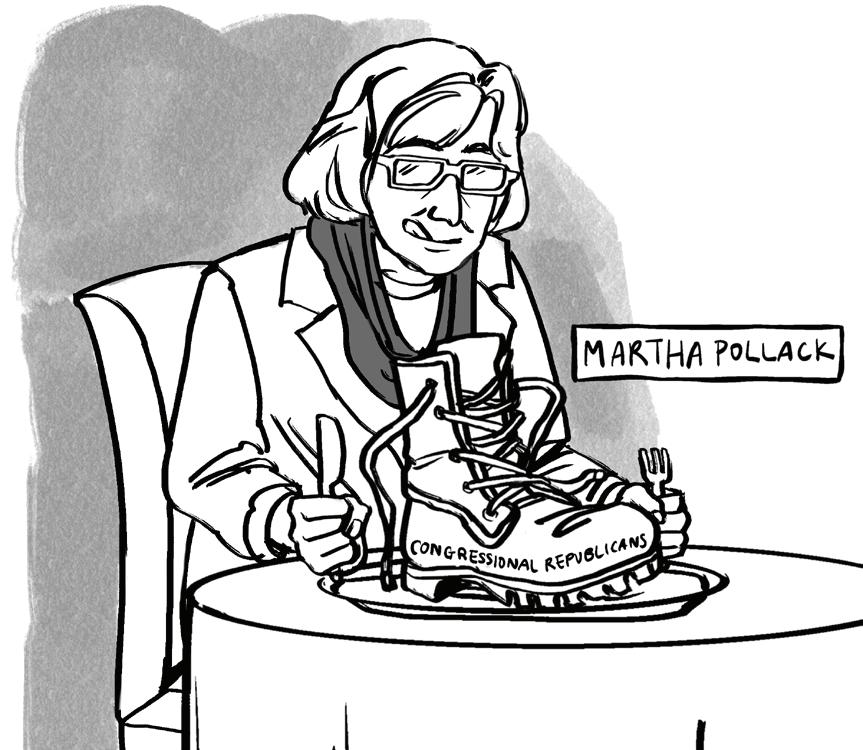



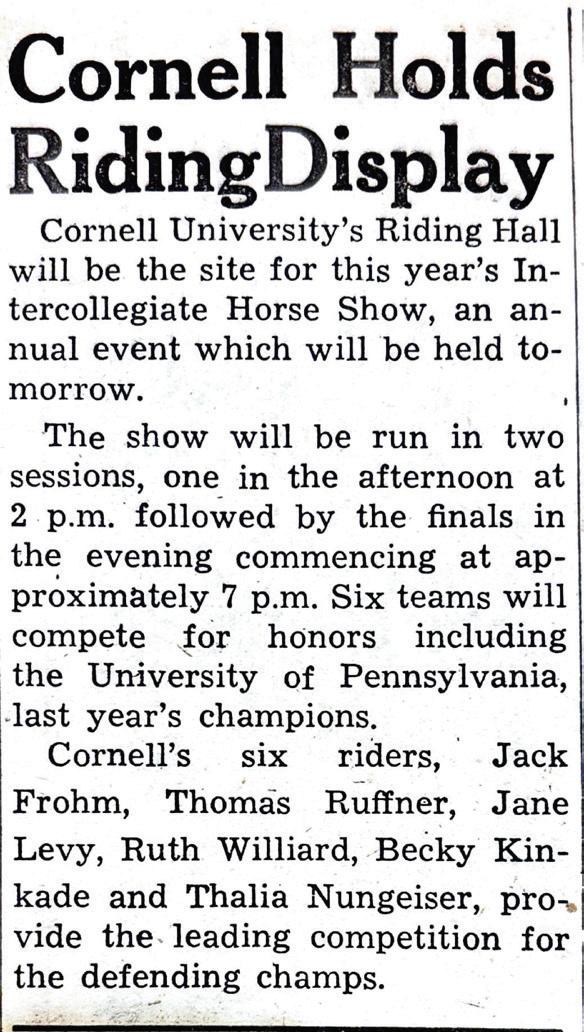
SPRINGFIELD, M.A.
— Last year, men’s hockey downed Denver, 2-0, in the regional semifinal. The Red shut down the then-defending national champions, scoring early and never looking back.
On Saturday, Cornell scored first. But ultimately, it wasn’t enough. Cornell’s season ended in the Springfield regional final, as Denver overpowered the Red in a 2-1 defeat.
“I’m extremely proud of our hockey team,” said head coach Mike Schafer ’86. “We fought all the way until the very end.”
Saturday marked Schafer’s 10th regional final game in his tenure. He has won only one of those 10, which came in 2003.
The game began fastpaced, with neither team taking control right off the bat. Denver had a couple of strong shifts in its offensive zone, which prompted a pad save by junior goaltender Ian Shane to start the game.
Despite making 16 saves on 18 shots on Saturday, Shane ultimately wasn’t named to the Springfield regional all-tournament team. Denver’s netminder, Matt Davis, was named the MVP of the weekend, while junior forward Sullivan Mack and freshman defenseman Ben Robertson were also named to the all-tournament team.
“[Shane]’s been outstanding all year long,” Schafer said. “He’s one of the top-three goaltenders in this country. It really ticks me off that he doesn’t get [to be a finalist] for the
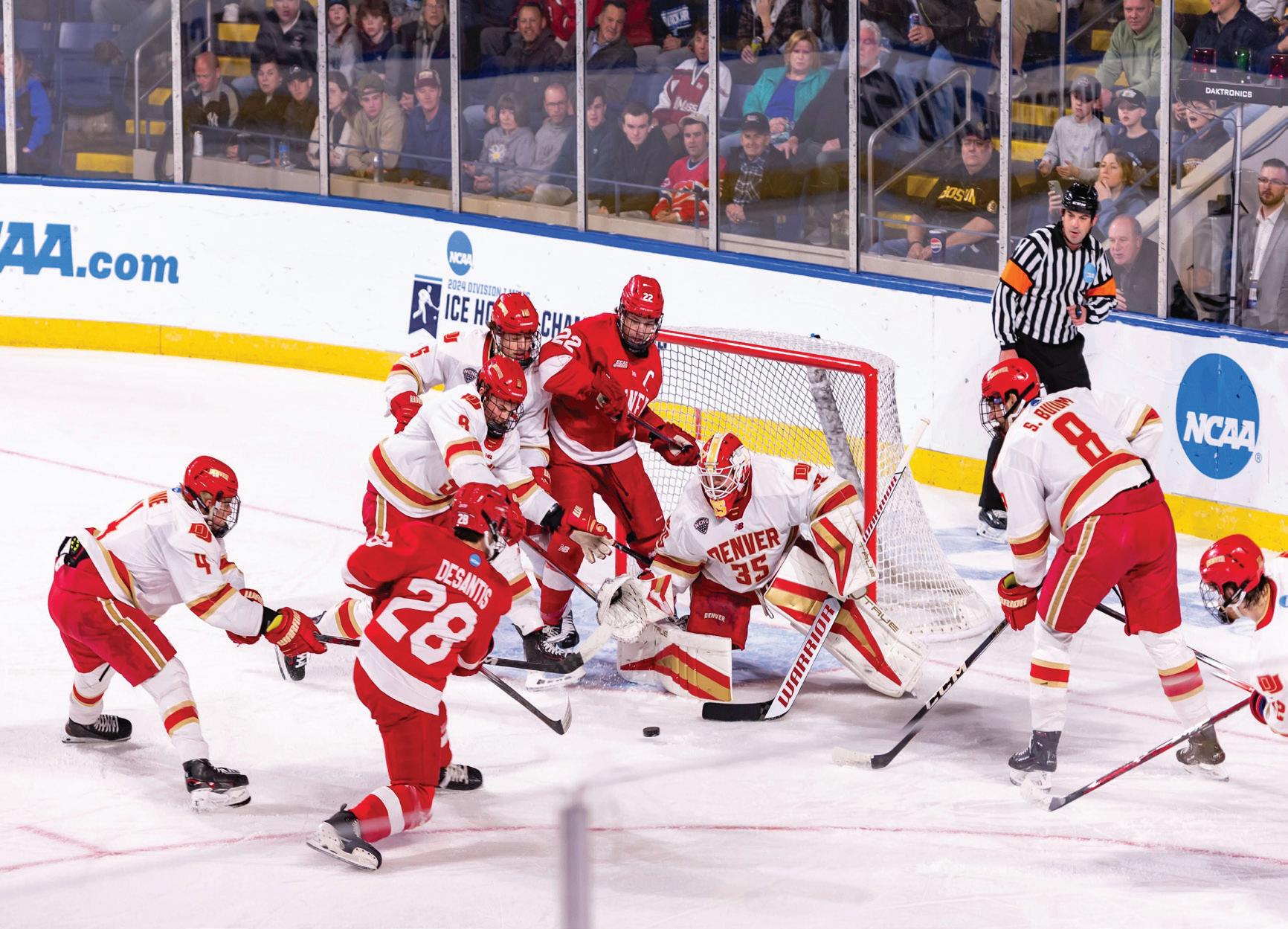
[Mike] Richter Award.”
Cornell followed Denver’s early chance with a strong shift of its own, which ultimately culminated in the game’s first goal. Following a strong bout of possession, the Red fired a pair of shots on Davis, creating a surplus of second-chance opportunities.
Sophomore forward Nick DeSantis cleaned up one of those loose pucks, tucking it past Davis and giving Cornell the first goal of the game. The Red took that and ran with it, ultimately controlling the play for much of the first period.
Though Cornell earned the first power play of the contest, the Red suffered a close call when Denver nearly evened the score on a shorthanded breakaway.
Robertson, looking to wrist a shot on the power play, tripped and coughed up the puck to the Pioneers. Shane deterred the Denver breakaway with a left-pad stop to preserve the Cornell lead.
Despite hunkering down on defense, the Red couldn’t escape the period unscathed. After the Pioneers broke through Cornell’s forecheck, Miko Matikka — a first-year Pioneer — lasered a shot over the shoulder of Shane to knot the score with 1:32 left in the first.
In the second frame, Denver displayed what earned it the top seed in the region, as the Pioneers controlled the pace of play and suffocated Cornell in its own zone. The Red struggled to break through the Denver forecheck, and when it did,

the Pioneers were quick to strip Cornell of possession.
With less than a minute to play in the period, a costly interference penalty was taken by freshman forward Jonathan Castagna late in the second period, sending a top-20 Pioneer power play unit onto the ice.
Cornell nearly got out of the period with the score tied, but a late Pioneer push resulted in the goahead goal for Denver. A shot from the Pioneers deflected off of both Denver’s Sam Harris — who was ultimately credited with the goal — and junior defenseman Hank Kempf, who had been left in front of the net without a stick from a previous play. The puck slowly trickled past Shane and into the net, giving Denver a 2-1 lead with just four seconds remaining in the period.
“They capitalized on their chances. We didn’t kill the penalty,” Schafer said.
Meeting perhaps its strongest opponent of the season in Denver — a team with 11 NHL draft picks — Cornell looked tired as Denver carried its momentum into the third.
Cornell nearly evened the score, though, when Castagna had a gaping net with Davis off balance, but couldn’t corral the shot cleanly.
Missed chances were ultimately the difference in the final period — though Cornell looked tired and Denver skated faster down the stretch, the Red had no shortage of looks, missing a few wide-open opportunities in the waning moments.
Cornell pulled Shane with 2:38 left, looking to even the score with its season on the line. The Red called time-
out to draw up a play, lining up for an offensive-zone faceoff soon thereafter.
A defeating whistle blew as freshman forward Ryan Walsh made an errant play of slashing a Pioneer stick. With 2:35 left and searching for the equalizer, Cornell headed to the penalty kill.
“I don’t like the call. It’s one of the weakest calls in hockey,” Schafer said.
The Red killed the penalty, but with the clock against it, couldn’t find the equalizer. Walsh fired a one-timer in the waning seconds, but Davis made the stop, sending Denver to the Frozen Four.
“Mistakes are gonna happen. Things happen in a game,” Schafer said. “Guys in our locker room were saying sorry to each other — there’s nothing to be sorry about. Ryan [Walsh] did everything he could to help us win that game, including that chance at the very end. He laid everything he could out there to help us try to win the game.”
“That’s what sports is about – you get to here, now you’ve got to take that next step.”
Cornell finishes its season 22-7-6 and with a Whitelaw Cup under its belt. The Red will look to break its 21year Frozen Four drought in the 2024-25 season.
“We knew we could only lose one game after Christmas,” Schafer said. “We could only lose one game and we’re going to be out of the tournament, and we lost one in overtime and we lost one that put us right on the bubble.
Just a week prior, Cornell won an ECAC championship to keep its season alive. Had Cornell lost in the title game, it never would’ve gotten the opportunity in the NCAA tournament, as the Red would’ve been mathematically eliminated from at-large bid contention.
“They carried that all year long, never got distracted, overcame that adversity,” Schafer said. “They kept plugging away. … That’s what sports is about — you get to here, now you’ve got to take that next step.”